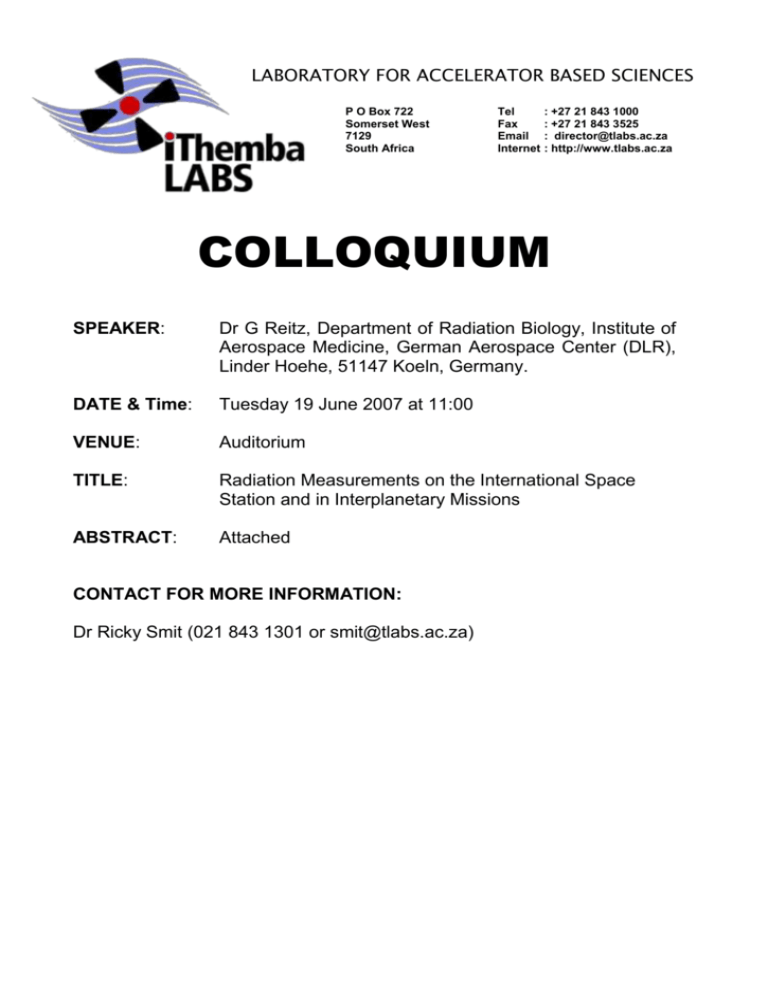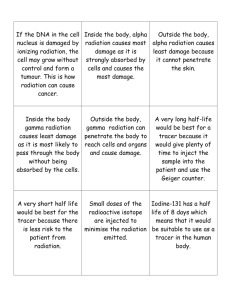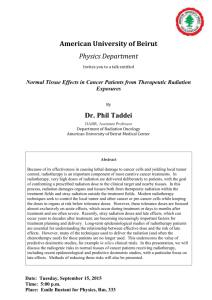COLLOQUIUM SPEAKER: Dr G Reitz, Department of Radiation
advertisement

LABORATORY FOR ACCELERATOR BASED SCIENCES P O Box 722 Somerset West 7129 South Africa Tel Fax Email Internet : +27 21 843 1000 : +27 21 843 3525 : director@tlabs.ac.za : http://www.tlabs.ac.za COLLOQUIUM SPEAKER: Dr G Reitz, Department of Radiation Biology, Institute of Aerospace Medicine, German Aerospace Center (DLR), Linder Hoehe, 51147 Koeln, Germany. DATE & Time: Tuesday 19 June 2007 at 11:00 VENUE: Auditorium TITLE: Radiation Measurements on the International Space Station and in Interplanetary Missions ABSTRACT: Attached CONTACT FOR MORE INFORMATION: Dr Ricky Smit (021 843 1301 or smit@tlabs.ac.za) Radiation Measurements on the International Space Station and in Interplanetary Missions G. Reitz Department of Radiation Biology, Institute of Aerospace Medicine, German Aerospace Center (DLR), Linder Hoehe, 51147 Koeln, Germany. For area monitoring several active and passive dosemeters in the frame of the DosMap experiment were flown as part of NASA's Human Research Facility in Increment 2 of the ISS. This was the first time a mapping of the radiation distribution inside the US lab and Node 1 could be provided. Further measurements inside the ISS are planned with the experiment DOSIS using similar instrumentation. To relate these quantities to radiation protection quantities measurements needs to be performed using anthropomorphic phantoms. The ESA multi-user facility MATROSHKA was designed to provide accurate information on the radiation doses in human organs during EVA and IVA activities. The key part of MATROSHKA is a human phantom upper torso, equipped with numerous radiation detectors at the surface and inside the phantom. The MATROSHKA facility therefore allows the determination of the empirical relations between measurable absorbed doses at the skin and the tissue absorbed doses in different depth inside the phantom. Once the ratios for the tissue- and surface absorbed doses are known for a given radiation field around the human body, these values may be used in future exposures during long haul space flights e.g. a flight to Mars to determine the required tissue absorbed doses from measurements of surface absorbed doses. For future manned missions to Mars actual measurements needs to be provided in precursor missions, since until now only approximate dose values from model calculation are obtainable. To characterize the radiation environment on the cruise to Mars and on its surface two instruments are planned, one as part of the NASA MSL (Mars Science Lab) mission, the Radiation assessment detector (RAD) and one as part of the European ExoMars mission, the Ionizing Radiation Sensor (IRAS). Both instruments are silicon detector telescopes using scintillators with anti coincidence techniques; RAD in addition uses a CsI calorimeter. This presentation intends to give a short overview of the instrumentation used in the DosMap experiment and inside the MATROSHAKA facility together with selected results and finally describes the instruments and the measurements planned in the near future on ISS and on missions to Mars. ________________________________








